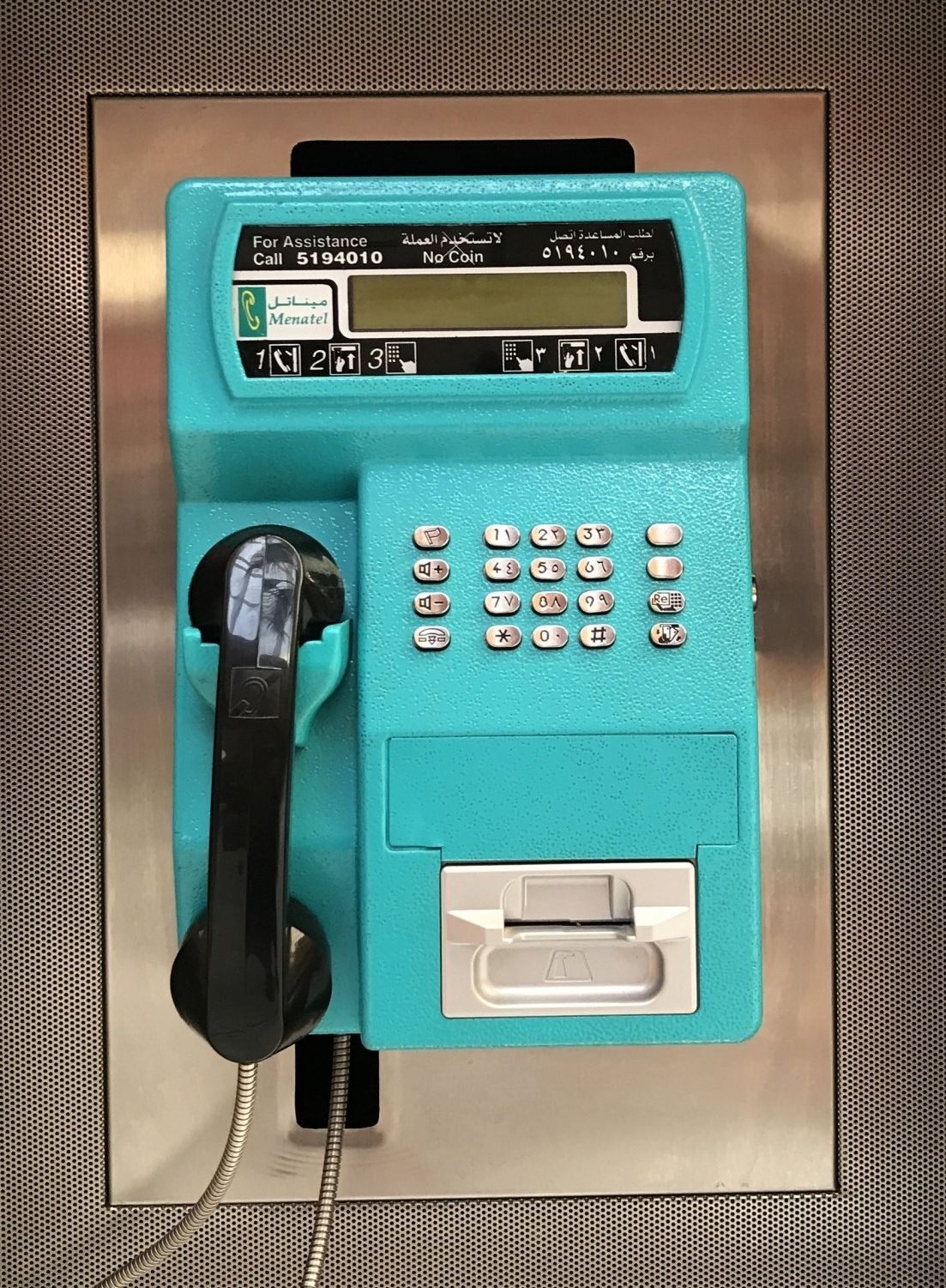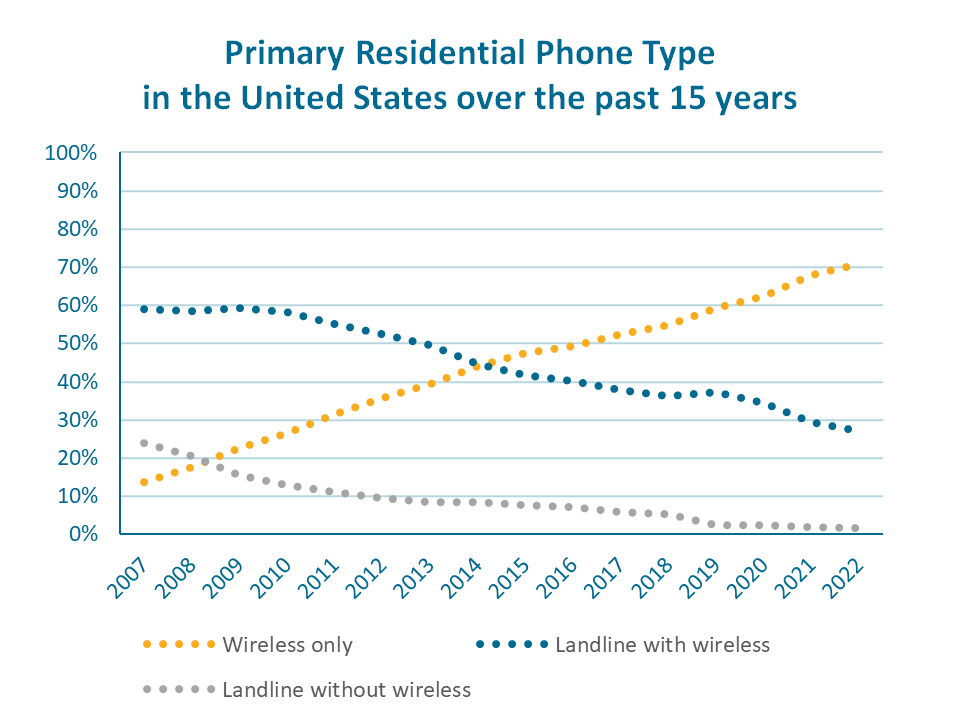Is the traditional landline telephone dead?
by Jon Lober | NOC Technology
Recent deregulation in the US phone market means that the sun is setting on the reign of plain old telephone systems.

After a remarkable run, POTS (Plain Old Telephone Service) is reaching the end of its road. Nearly 150 years ago, traditional telephones revolutionized human communication. By sending analog signals along copper wires, callers were able to accomplish in minutes what might have previously taken weeks or months by letter. In the United States, POTS dominated the voice communication industry through the same technology for well over 100 years. However, the rise of cell phones and VoIP (Voice over Internet Protocol) systems over the past two decades have finally toppled the copper king from his throne.
The decline of POTS began more than 20 years ago as homes and businesses gradually abandoned landline phones in favor of other options. In addition, a recent FCC (Federal Communications Commission) order has now removed POTS’s final lifeline.
Trends at Home and at Work
The reign of POTS reached its full glory around the turn of the millennium. In 1999, landline use crescendoed at more than 180 million end users. However, as mobile phone technology matured during the same period, it began to siphon off users from landlines to cellular phones. This steady drip away from POTS quickly became a torrent. In less than 20 years, the U.S. Bureau of Labor Statistics reported that by 2017 the average American home was spending four times more on their cell phones than their landlines. Over the past fifteen decades, the vast majority of homes abandoned their landlines in favor of wireless options.

Chart: Data from the CDC National Center for Health Statistics NHIS (now archived)
While the wireless phone revolution was happening at home, VoIP technology was taking over at work. VoIP (Voice over Internet Protocol) uses the internet to connect callers instead of physical connections through copper wires. The opportunity to save money while increasing productivity was an easy decision for many businesses. According to the FCC, from 2008 to 2017, business reliance on POTS fell by 49% while business adoption of VoIP rose an incredible 1062%.
The FCC Removes POTS Lifeline
In 1996, the Telecommunications Act of 1996 was drafted by Congress and approved by President Bill Clinton. This wide-sweeping bill was primarily designed to overhaul the regulatory framework of the telecom industry, promote healthy competition in local markets, and ensure quality and reliability for end users. For legacy phone service providers, this meant that they were legally required to maintain their networks, equipment, and services, which included the consistent provision of telephone service through analog copper wires.
Over the following years, VoIP and cell phones advanced rapidly. As upstart and legacy service providers began to provide additional services through these technologies, they assumed the double burden of development costs for new technologies in addition to the responsibility of maintaining expensive, aging copper wire infrastructure. As companies struggled to balance the growth of the new and the maintenance of the old, they began to increase their pressure on the FCC to allow them to abandon the older systems and focus on the new superior VoIP and cellular systems.
According to a 2021 article in the Journal of Innovation and Sustainability, as early as 2009, AT&T had requested that the FCC abandon POTS altogether by 2020. Just a few years later, in 2013 the FCC itself predicted that POTS would be dead by 2023, though the projected phase out dates in 2018 came and went without event. However, in 2019 the FCC released a significant Memorandum Opinion and Order.
In technical terms, Memorandum FCC 19-72 issued a forbearance of existing maintenance obligations for phone service providers established in the Telecommunications Act of 1996. This essentially released legacy phone service providers from the responsibility of maintaining POTS systems since viable alternatives such as VoIP are now available.
In its decision, the FCC was explicit in its desire to that the industry abandon POTS and expand VoIP and similar technologies. Their view was not only that the requirement for legacy providers to maintain POTS analog service “can no longer be justified as relevant or necessary,” but that it was actually “unnecessary and counterproductive in light of technology transitions, the competitive landscape for voice communications services and capabilities, including especially interconnected VoIP…”
In other words, the FCC declared that POTS was defunct and dying and that VoIP was already ascending to take its rightful place.
The King is dead. Long live the King.
While POTS may not technically be dead yet, it is certainly on its deathbed. The FCC order allowed for a three-year transition period, which was completed in August 2022. The transition period simply meant that during that time frame, legacy providers were required to continue to offer POTS as a service to customers. Now that we are beyond that date, phone companies no longer have any obligation to offer that service and as a result, legacy phone service providers have been rapidly abandoning expensive POTS systems in favor of VoIP.
POTS will likely endure in a few niche instances due to other FCC rules requiring alternative forms of access for disability services, fire/security alarms, medical devices, and emergency services. However, the reign of POTS as the golden standard in voice communications is now coming to an end. Most users have already made the switch to VoIP, are considering the switch, or may potentially even be forced to switch by their carrier in the coming years as they abandon POTS in favor of VoIP.




